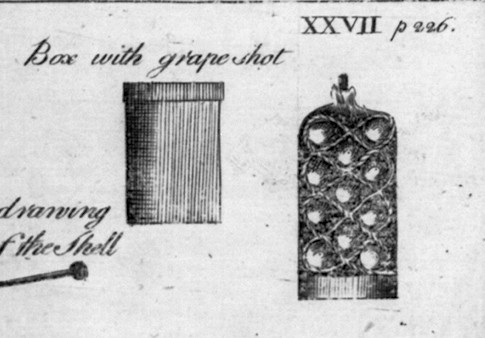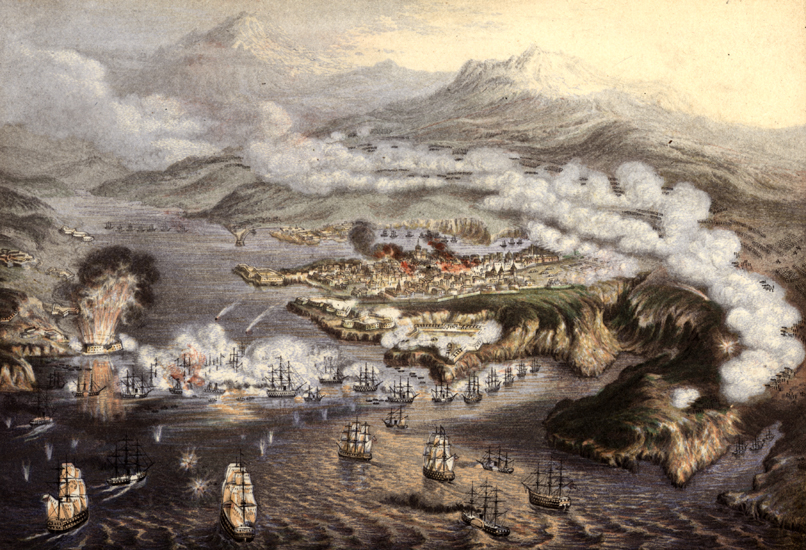|
Thomas Esmonde (VC)
Thomas Esmonde, VC (25 May 1829 – 14 January 1872) was a British Army The British Army is the principal land warfare force of the United Kingdom, a part of the British Armed Forces along with the Royal Navy and the Royal Air Force. , the British Army comprises 79,380 regular full-time personnel, 4,090 Gur ... officer and an Irish recipient of the Victoria Cross (VC), the highest award for gallantry in the face of the enemy that can be awarded to British and Commonwealth of Nations, Commonwealth forces. Early life and family Esmonde was born in Pembrokestown, County Waterford, the son of Commander James Esmonde of the Royal Navy. His older brother was Sir John Esmonde, 10th Baronet, and he was the great-uncle of Eugene Esmonde, who was to be awarded the Victoria Cross in the Second World War. Esmonde was educated at the Jesuit-run Clongowes Wood College, County Kildare, from 1840 to 1846. In 1851 he was commissioned as an Ensign (rank)#United Kingdom, ensign in the ... [...More Info...] [...Related Items...] OR: [Wikipedia] [Google] [Baidu] |
Clongowes Wood College
Clongowes Wood College SJ is a voluntary boarding school for boys near Clane, County Kildare, Ireland, founded by the Jesuits in 1814, which features prominently in James Joyce's semi-autobiographical novel '' A Portrait of the Artist as a Young Man''. One of five Jesuit schools in Ireland, it had 450 students in 2019. The school's current headmaster, Christopher Lumb, is the first lay headmaster in its history. School The school is a secondary boarding school for boys from Ireland and other parts of the world. The school is divided into three groups, known as "lines". The Third Line is for first and second year students, the Lower Line for third and fourth years, and the Higher Line for fifth and sixth years. Each year is known by a name, drawn from the Jesuit '' Ratio Studiorum'': Elements (first year), Rudiments (second), Grammar (third), Syntax (fourth), Poetry (fifth), and Rhetoric (sixth). Buildings The medieval castle was originally built in the 13th century by Stuart ... [...More Info...] [...Related Items...] OR: [Wikipedia] [Google] [Baidu] |
Half-pay
Half-pay (h.p.) was a term used in the British Army and Royal Navy of the 18th, 19th and early 20th centuries to refer to the pay or allowance an officer received when in retirement or not in actual service. Past usage United Kingdom In the English Army the option of half-pay developed during the late 17th and early 18th centuries, at the same time as the system of purchasing commissions and promotions by officers took hold. Serving officers could go on half-pay voluntarily, or be obliged to do so if their services were not required. In both cases, they could be summoned back to their regiments if there was a sudden need for their services. As an example, during the Jacobite rising of 1715, all listed half-pay officers were recalled to the army. In the long period of peace that the reduced British Army experienced after the Napoleonic Wars, the half-pay system became a means by which arduous overseas service could be avoided. Well-to-do officers who were promoted through the p ... [...More Info...] [...Related Items...] OR: [Wikipedia] [Google] [Baidu] |
Royal Irish Constabulary
The Royal Irish Constabulary (RIC, ga, Constáblacht Ríoga na hÉireann; simply called the Irish Constabulary 1836–67) was the police force in Ireland from 1822 until 1922, when all of the country was part of the United Kingdom. A separate civic police force, the unarmed Dublin Metropolitan Police (DMP), patrolled the capital and parts of County Wicklow, while the cities of Derry and Belfast, originally with their own police forces, later had special divisions within the RIC. For most of its history, the ethnic and religious makeup of the RIC broadly matched that of the Irish population, although Anglo-Irish Protestants were over-represented among its senior officers. The RIC was under the authority of the British administration in Ireland. It was a quasi-military police force. Unlike police elsewhere in the United Kingdom, RIC constables were routinely armed (including with carbines) and billeted in barracks, and the force had a militaristic structure. It policed Irelan ... [...More Info...] [...Related Items...] OR: [Wikipedia] [Google] [Baidu] |
Brevet (military)
In many of the world's military establishments, a brevet ( or ) was a warrant giving a commissioned officer a higher rank title as a reward for gallantry or meritorious conduct but may not confer the authority, precedence, or pay of real rank. An officer so promoted was referred to as being brevetted (for example, "he was brevetted major general"). The promotion would be noted in the officer's title (for example, "Bvt. Maj. Gen. Joshua L. Chamberlain" or "Bvt. Col. Arthur MacArthur"). It is not to be confused with a '' Brevet d'état-major'' in Francophone European military circles, where it is an award, nor should it be confused with temporary commissions. France In France, ''brevet'' is a word with a very broad meaning, which includes every document giving a capacity to a person. For instance, the various military speciality courses, such as military parachutism, are ended by the award of a brevet. The more important brevet in the French military is the one of the Éco ... [...More Info...] [...Related Items...] OR: [Wikipedia] [Google] [Baidu] |
Grapeshot
Grapeshot is a type of artillery round invented by a British Officer during the Napoleonic Wars. It was used mainly as an anti infantry round, but had other uses in naval combat. In artillery, a grapeshot is a type of ammunition that consists of a collection of smaller- caliber round shots, which in most cases are about the size of a golf ball, packed tightly in a canvas bag and separated from the gunpowder charge by a metal wadding, rather than being a single solid projectile. Grapeshot also comes packaged in clusters of three by iron rings, and in three tiers, with the shot being held in by cast iron rings. When assembled, the shot resembled a cluster of grapes, hence the name. Grapeshot was used both on land and at sea. On firing, the canvas wrapping disintegrates and the contained balls scatter out from the muzzle, giving a ballistic effect similar to a giant shotgun. Grapeshot was devastatingly effective against massed infantry at short range and was also used at medi ... [...More Info...] [...Related Items...] OR: [Wikipedia] [Google] [Baidu] |
Battle Of The Great Redan
The Battle of the Great Redan (russian: Оборона Третьего бастиона) was a major battle during the Crimean War, fought between British forces against Russia on 18 June and 8 September 1855 as a part of the Siege of Sevastopol. The French army successfully stormed the Malakoff redoubt, whereas a simultaneous British attack on the Great Redan to the south of the Malakoff was repulsed. Contemporary commentators have suggested that, although the Redan became so important to the Victorians, it was probably not vital to the taking of Sevastopol. The fort at Malakhov was much more important and it was in the French sphere of influence. When the French stormed it after an eleven-month siege that the final, the British attack on the Redan became somewhat unnecessary. Background Russia attacked the Ottoman Empire in 1853, aiming for territorial aggrandisement, but their invasion was repulsed. In early 1854 the British and French governments issued an ultimatum t ... [...More Info...] [...Related Items...] OR: [Wikipedia] [Google] [Baidu] |
Siege Of Sevastopol (1854–1855)
The siege of Sevastopol (at the time called in English the siege of Sebastopol) lasted from October 1854 until September 1855, during the Crimean War. The allies (French, Sardinian, Ottoman, and British) landed at Eupatoria on 14 September 1854, intending to make a triumphal march to Sevastopol, the capital of the Crimea, with 50,000 men. Major battles along the way were Alma (September 1854), Balaklava (October 1854), Inkerman (November 1854), Tchernaya (August 1855), Redan (September 1855), and, finally, Malakoff (September 1855). During the siege, the allied navy undertook six bombardments of the capital, on 17 October 1854; and on 9 April, 6 June, 17 June, 17 August, and 5 September 1855. The Siege of Sevastopol is one of the last classic sieges in history. The city of Sevastopol was the home of the Tsar's Black Sea Fleet, which threatened the Mediterranean. The Russian field army withdrew before the allies could encircle it. The siege was the culminating struggle ... [...More Info...] [...Related Items...] OR: [Wikipedia] [Google] [Baidu] |
Royal Irish Regiment (1684-1922) , properly named the Royal Irish Regiment (27th (Inniskilling) 83rd and 87th and Ulster Defence Regiment)
{{mil-unit-dis ...
Royal Irish Regiment may be either of two British Army regiments: *Royal Irish Regiment (1684–1922), also known as the 18th Regiment of Foot *Royal Irish Regiment (1992) The Royal Irish Regiment (27th (Inniskilling), 83rd, 87th and The Ulster Defence Regiment) (R IRISH) is an infantry regiment of the British Army. The regiment was founded in 1992 through the amalgamation of the Royal Irish Rangers and the Ulst ... [...More Info...] [...Related Items...] OR: [Wikipedia] [Google] [Baidu] |
Captain (land And Air)
The army rank of captain (from the French ) is a commissioned officer rank historically corresponding to the command of a company of soldiers. The rank is also used by some air forces and marine forces. Today, a captain is typically either the commander or second-in-command of a company or artillery battery (or United States Army cavalry troop or Commonwealth squadron). In the Chinese People's Liberation Army, a captain may also command a company, or be the second-in-command of a battalion. In some militaries, such as United States Army and Air Force and the British Army, captain is the entry-level rank for officer candidates possessing a professional degree, namely, most medical professionals (doctors, pharmacists, dentists) and lawyers. In the U.S. Army, lawyers who are not already officers at captain rank or above enter as lieutenants during training, and are promoted to the rank of captain after completion of their training if they are in the active component, or after ... [...More Info...] [...Related Items...] OR: [Wikipedia] [Google] [Baidu] |





